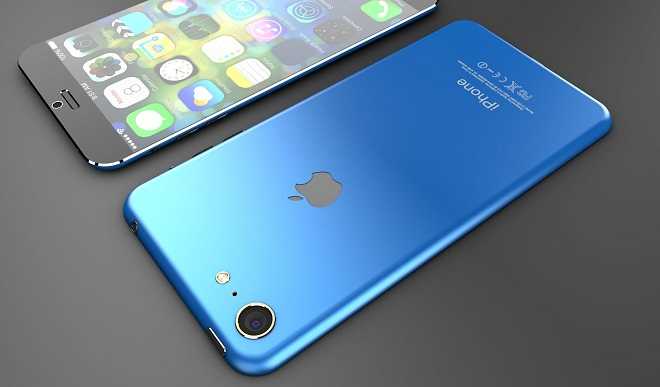iPhone SE: “6S Plus” capability at half the price!
Residents of Australia, Canada, China, France, Germany, Hong Kong, Japan, New Zealand, Puerto Rico, Singapore, the UK, US Virgin Islands, and the U.S., got a special treat from Apple last week Thursday: the surprising launch of the small-screen (4-inch) iPhone SE smartphone. It happened a day before April Fool’s Day, so it was for real. […]


Residents of Australia, Canada, China, France, Germany, Hong Kong, Japan, New Zealand, Puerto Rico, Singapore, the UK, US Virgin Islands, and the U.S., got a special treat from Apple last week Thursday: the surprising launch of the small-screen (4-inch) iPhone SE smartphone. It happened a day before April Fool’s Day, so it was for real. Other countries will have to wait till sometimes later this month for their turn.
The launch of iPhone SE is kind of interesting. Not because of the sneaky way in which it was introduced – it was first announced on 21 March 2016 and then launched on 31 March. After all, we’ve gotten used to the ways in which Apple launches its products. Steve Jobs, the co-founder of Apple, eschewed the idea of large-screen smartphones, even though, after his death, it was precisely large-screen smartphones that propelled Apple to the position of world’s Number One most-capitalized company, with iPhone accounting for almost two-thirds of the revenues in 2014. So, why then is the company coming out with a small-screen phone, as if to vindicate Jobs?
Economics might have been at play in the decision. The madness that was witnessed in 2014 in the demand for iPhone 6, and, especially, 6 Plus, was not replayed in 2015 after iPhone 6S and 6S Plus were launched. I have written quite a bit about demand saturation, which seems to be an issue now; especially for the costly, high-end phones, some of which could retail for as much as $1000 a piece. Emerging markets, which have the populations, do not have the cash. Hence, it makes sense to beat prices down, and that’s what Apple seems to be doing by launching SE. While Xiaomi, who has focused on emerging market, peddles phones that are competitive to SE price-wise, Xiaomi’s products, though very good, cannot compare in terms of the technology and features that are buried in SE. (The price tag of $399 for SE is for 16 GB; the 64GB version costs $499.) Though not revealed by Apple, the guess is that SE has a RAM of 2 GB.
The iPhone SE essentially has all the good stuff in 6S and 6S Plus, the technologically most advanced phones, but retails at half the price. SE is a small phone; the length of the diagonal is 4 inches, just like iPhone 5 and 5S. It’s hard to distinguish SE from 5S at a glance. However, SE includes a color-matched inset stainless steel Apple logo and matte chamfered edges, in contrast to the shiny chamfered edges and standard logo of the iPhone 5S. The display of SE is protected by a layer of Gorilla Glass, which is resistant to scratches and other damages, and there’s a fingerprint-resistant oleo-phobic (oil or grease-resistant) coating. The new phone will be perfect for consumers who are still using 5 or 5S and therefore haven’t been hooked onto the larger 4.7-inch or 5.5-inch Apple phones.
Although SE shares a lot with the top of the line Apple phones, the 3D Touch capability is absent and the front-face camera resolution in SE is somewhat dated – at the 5S standard. Like all of Apple’s latest devices, the iPhone SE is made from a lightweight aluminum alloy, but it doesn’t appear to use the stronger 7000 series aluminum introduced with the iPhone 6S. SE is available in Silver, Space Gray, Gold, and Rose Gold.
SE is based on the same dual-core 64-bit A9 processor (chip) of 6S or 6S Plus, with integrated M9 motion coprocessor, which has the capability to get Siri, the digital assistant, in the “always-on” mode. With the always-on feature, you can activate Siri at any time by saying “Hey Siri.” (In older iPhones, “Hey Siri” hands-free capabilities are only available when the device is charging.) The M9 motion coprocessor also enables the determination of certain fitness health-monitoring metrics. Note that, with the A9 chip, SE has 2x faster CPU and 3x faster GPU performance compared to iPhone 5S. SE is blazingly fast, really, enabling you to play highly intensive games.
The iPhone SE uses the rear-facing camera as in iPhone 6S, but the front-facing FaceTime camera is an older module from iPhone 5S. However, SE has one front-facing camera feature first introduced in 6S – a Retina Flash. With the Retina-Flash capability, the display of your phone flashes brightly just before a picture is snapped, improving “selfies” in low light. It is three times as bright as the standard display, and it matches ambient light. The fingerprint sensor in SE is that of 5S. The battery life of SE is overall better than that of 6S but trails that of 6S Plus. Finally, SE supports Live Photo, in which the camera takes multiple photos 1.5 seconds before and after you shoot, and uses the frames to create some movie.
